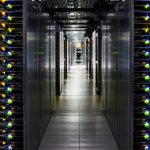We are living in a hyper-connected world and Gartner forecasts that 25 billion of “things” will be connected by 2020. The average cost of sensors has halved since 2004 and is expected to halve again by 2020, making it cost effective to embed them virtually into anything to give the Internet of Things (IoT) real wings
Big data and cloud computing have emerged as means to manage the deluge of data these connections are creating in an intelligent, efficient and cost effective manner, which has been putting data centers under a tremendous pressure. And while data center operators are looking at the best ways to scale, be the first to market with new cloud offerings and keep the cost down, the energy management – without which everything goes offline, is still approached as an afterthought.
This mindset needs to change and change fast. To make the cloud resilient, there is a need for intelligent, automated, sensors-driven, self-healing energy management system.

The Marriage of IT Assets and Energy
For data centers to offer resilient cloud applications and services, they need to start looking at integrated management of both facility and IT operations. To successfully do this, new skills and new software are needed to understand how the IT infrastructure should be operating, where within the data center that IT infrastructure should be located and how it should be connected to the power and the network. There needs to be a strong bridge between the IT infrastructure and the facility.
Data Center Infrastructure Management (DCIM) is an emerging class of IT physical infrastructure solutions, gaining tractions from various industries. As a solution that integrates IT physical infrastructure management, facilities management, and systems management, DCIM is transforming how the IT ecosystem is seen and managed. Gartner also predicts that by 2017, DCIM tools will be significantly deployed in over 60% of larger data centers.
To give you an example, DCIM understands how a server’s connected to the power chain, how it’s being cooled down, where it’s located and so on, as well as the performance characteristics, such as how much memory it has. It measures and understands this data and much more. Moreover, DCIM is also able to provide most efficient energy management to keep the data center efficient and stable while reducing the energy consumption. The system provides real time and forecasted views of the facilities for optimization of the assets and resources and reliable uptime.
Among the myriad DCIM tools in the market, data center owners and operators should look for those that provide a single dashboard to monitor company-wide, multi-vendor physical infrastructure – including power, cooling, security, and environment as well. These dashboards need to display real-time critical alerts, device failures and recommendations on how to resolve them even via smart tablet and smart phone apps. The ability to make such informed decisions from a “building administration to physical IT infrastructure” perspective through a unified management system, is what most data centers today are lacking. Fewer than 10 percent of data centers utilize DCIM and 451 Research estimates that the DCIM supplier revenue will grow at a 44 percent compound annual growth rate until 2016.
Remote and Automated Energy Management
The fact that all physical aspects of the IT infrastructure can now be monitored with sensors, opens up the advantages of remote and automated energy management in data centers backed by data science. The concept of always-on datacenter where the operators are able to monitor the percentage of energy used, wasted, saved for every physical and virtual device connected to the network while understanding fully its relation to, interdependence and critical status, is now a reality.
The use of data science to bring more precision and predictive power to data center has become essential in light of the volatile trends such as social, mobile, cloud and so. It enables the operators to make better sense out of what is happening with their data centers and model, predict and adapt to change.
Data science combines computing techniques with mathematical and statistical knowledge to extract insights. In data centers, data science can be applied to questions such as how to adjust power and cooling capacity to meet a rapid shift in demand, or use data modeling and advanced analytics to make predictions about needed cooling capacity, or to predict the systems most prone to failure, or whether and how data center is able to handle increasing kilowatts (KW) per square meter (SqM). When combined with DCIM and domain expertise in power and cooling, data science can help a data center adapt to volatility without risking or wasting resources.
If data science isn’t tapped, many operators, even in newer data centers, will remain stuck in fire-fighting mode and will see the efficiency gains they first realized with a new facility, erode.








